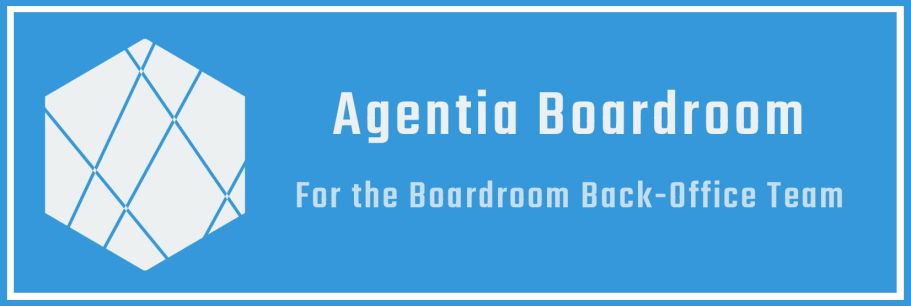The Parallel Board AI Journey:
A New Way to Think About AI in the Boardroom
AI has become a topic of growing interest in boardrooms. As its impact spreads across industries, products, operations and risks, many boards are starting to ask the right questions:
'What are the strategic implications of AI?'
'How do we manage its risks, ethics and compliance?'
'Where does AI fit into our governance responsibilities?'
These are important questions, and they’re part of what’s becoming an emerging expectation: that boards must provide oversight of AI across the organisation.
But there’s a second, equally important question that’s only just beginning to surface:
'How can boards use AI themselves to become more effective?'
This is the critical insight boards can no longer ignore, their journey with AI is not one path, but two.
And both journeys must start now!
Oversight vs Use:
The Two AI Paths for Boards
Boards now face two distinct responsibilities when it comes to AI:
1️⃣ AI as a Governance Issue
This is the more visible path — where boards act as supervisors of AI. It includes:
- Strategic risk and opportunity oversight
- Ethical and regulatory considerations
- Policy and compliance frameworks
- Oversight of how AI is used across the organisation
Boards have a clear role here, and the conversation is beginning. Governance professionals are preparing frameworks, and committees are exploring their scope.
2️⃣ AI as a Boardroom Tool
This second path is less discussed — but just as important. It asks:
How can AI help the board itself perform better?
- Help directors navigate increasingly complex board packs
- Surface insights to support better decisions
- Assist governance professionals in preparing smarter materials
In this path, the board isn’t just a supervisor of AI, it’s a user of it. And this use is directly tied to board effectiveness.
The Two Journeys Are Parallel and Interconnected
Boards don’t need to choose one journey over the other. They must pursue both, in parallel.
🎯 You can’t truly govern AI if you don’t understand how to use it. And you can’t use AI responsibly without proper governance structures.
Boards must advance on both journeys at the same time:
✔ The Governance Journey: Creating structures, responsibilities and policies to oversee AI use across the organisation.
✔ The Effectiveness Journey: Using AI to support the board’s own performance — from meeting preparation to insight generation to decision support.
These journeys are mutually reinforcing — and best started together.
What This Looks Like in Practice
For boards and governance professionals, starting the parallel journey might include:
✅ Becoming AI-informed through briefings, training or facilitated workshops
✅ Beginning structured oversight discussions in risk, audit or governance committees
✅ Using AI tools to summarise, search or interact with board materials
✅ Preparing board documents with structure that supports insight extraction
✅ Creating space for experimentation, guided by governance professionals
This isn’t about implementing everything at once.
📌 It’s about starting the right journey with the right understanding.
Why This Matters Now
In earlier articles, we explored how AI can support board secretarial tasks like drafting minutes. We also examined how directors face mounting pressure to process growing volumes of board information.
What we’ve learned is this:
🎯 AI won’t just shape the organisation — it will shape the boardroom itself.
And boards that only focus on governance oversight, without improving their own effectiveness, will struggle to keep pace.
Conclusion: A New Mental Model for AI in the Boardroom
AI in the boardroom isn’t just a matter of oversight, it’s also a matter of enablement.
✔ The Parallel AI Journey is a new way of thinking — one that recognises the dual responsibility boards now carry:
- To govern AI across the organisation
- And to use it, intelligently and responsibly, to improve how the board operates
At Agentia Boardroom, we help boards begin both journeys — with advisory, training and the right enabling technology.
🚀 Real boardroom transformation happens when governance and performance advance, together.
Start Your Journey!
Ready to begin? Fill out the form, drop us a line or give us a call.
Contact Us
Registered Office: 19-21 Chapel St, Marlow, SL7 3HN. Registered in England & Wales, Company Registration Number 16183922
© Copyright. All rights reserved. | Terms | Privacy Policy
We need your consent to load the translations
We use a third-party service to translate the website content that may collect data about your activity. Please review the details in the privacy policy and accept the service to view the translations.
